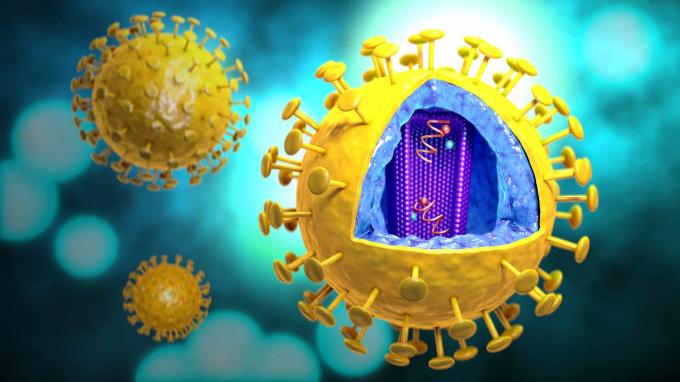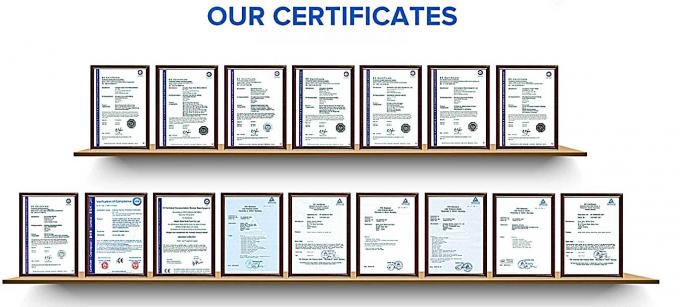as a procedural control, red colored band in the control region will always appear regardless the presence of antibodies to HIV-1/2.

Intended Use
The HIV-1/2 Rapid Diagnostic Test (RDT) is a qualitative test for the detection of antibodies to Human Immunodeficiency Virus type 1 and 2 (HIV-1/2) in human serum/plasma.
It is considered as an initial screening test for HIV-1/2 antibodies. All positive specimens must be confirmed with Western Blot or other qualified EIA.
Assay Procedure
☀ Place the test cassette on flat surface. Before unseal the pouch, allow the test cassette to reach room temperature(4-30°C) .Use it immediately once unsealed.
☀ Open the pouch and add1drop(30-40uL) of specimen into the sample well(S) .
☀ When the specimen is completely absorbed, slowly add1drop(45-55pL) of diluent buffer vertically into the sample well(s) .
☀ Avoid dropping specimen or diluent buffer in the observation window.
☀ Do not allow the diluent buffer bottle touch the sample well when dropping the diluent buffer so as to prevent the cross contamination with the specimen.
☀ Observe the result between 15-30 minutes after the diluent buffer added.
Interpretation of Results

☀ Negative: No apparent band in the test region (1 and 2), only one red band appears in the control region (C). This indicates that no HIV1/2 antibodies have been detected.
☀ Positive: In addition to the band in the control region (C), other one or two red bands will appear in the test region (1 and 2). This indicates that the specimen contains HIV1/2 antibodies.
☀ Invalid: If no band appears in the control region(C), regardless of the presence or absence of line in the test region (1 and 2). It indicates a possible error in performing the test. The test should be repeated using a new device.

Warning
For Invitro Diagnostic Use ONLY
Read the package insert completely before use. It is very important that the correct procedure is followed. Fail to add the patient sample may lead to a false negative result (i.e.a missed positive) .
Storage
Newscen HIV(1+2) Antibody Rapid Test can be stored at room temperature(4-30℃, do not freeze) for 24 months from the date of manufacture.
Keep the test cassette in sealed pouch until use.
Once you have taken the test cassette out of the pouch, perform the test as early as possible(within 1hour) to avoid test cassette from becoming moist. Do not use the test beyond the indicated expiration date.
The diluent buffer should be stored at room temperature(4-30℃, do not freeze) .
![]()
Reagents and Materials Provided
Each kit contains:
☀ 40 test cassettes(individually pouched)
☀ One bottle of diluent buffer(5ml)
☀ 40 disposable plastic droppers
☀ Each pouch contains one cassette with one desiccant bag
☀ Instruction for use
Materials Required But Not Provided
☀ Timer or stopwatch
☀ Biohazard disposal container
☀ Blood collection devices, for the testing of venous whole blood, serum or plasma
☀ Disposable gloves
For finger stick samples, the following materials are required:
Alcohol pad
Sterile lancet
Sterile gauze or cotton

Sample Collection and Test Preparation
Finger stick Specimens(Whole Blood)
☀ Clean the area to be lanced with an alcohol pad.
☀ Squeeze the end of the fingertip and pierce it with a sterile lancet.
☀ Wipe away the first drop of blood with sterile gauze or cotton; collect the sample from the second drop.
☀ Use dropper to obtain appropriate amount of fresh blood and dispense into the sample well.
Finger stick whole blood should be used immediately after collection.
Serum/Plasma specimens:fresh serum or plasma specimen can be used. No special patient preparation required.
Plasma
1. Collect whole blood into a collection tube(containing EDTA, Na-citrate or heparin) by venipuncture.
2. Separate the plasma by centrifugation.
Serum
1. Collect whole blood into a collection tube(containing no anticoagulants) by venipuncture.
2. Allow the blood to clot.
3. Separate the serum by centrifugation.
Any visible particulate matter in the specimen should be removed by centrifugation or filtration. Avoid using of hemolytic, turbid, microorganism contaminated specimens or specimens stored for over 5 days at 4°C.Specimen should be stored frozen at-20°C for maximum 3 months. Avoid specimen deterioration by multiple freeze-thaw cycles.
Venous Whole Bloods
Venous whole blood can be used immediately after collection or stored up to 4 days at 2-8°C.


